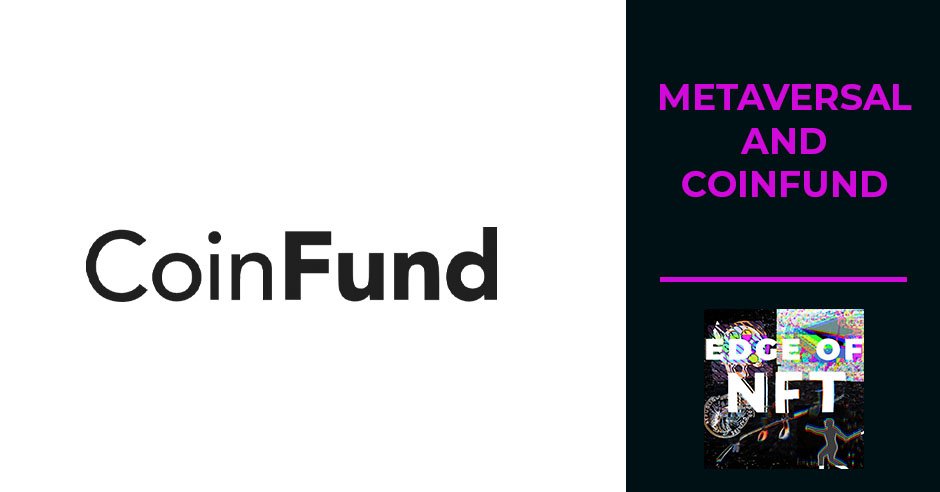
NFTs are the way of the future in the crypto space. With many chasing the crypto dream, Metaversal and CoinFund are two firms leading the way. In this episode, our hosts Jeff Kelley, Eathan Janney, Josh Kriger discuss the nitty-gritty of the metaverse with Yossi Hasson, co-founder and CEO of Metaversal and Vanessa Grellet, Head of Portfolio Growth at CoinFund. We discuss the state of the NFT space, where CoinFund and Metaversal are going and where they see NFTs will be in the near future. Tune in for more NFT insights as we discuss the ins and outs of the metaverse.
—
Listen to the podcast here
Metaversal And CoinFund
This episode features guests Yossi Hasson and Vanessa Grellet. Yossi is the Cofounder and CEO of Metaversal, a metaverse-focused startup that invests and produces iconic NFTs that enable the metaverse. Prior to Metaversal, he was the Managing Director of Techstars, the first blockchain accelerator in New York City, and launched Techstars’ first fintech-focused accelerator in Africa. He is a passionate venture-backed and award-winning entrepreneur turned investor. He is also the Non-Executive Director of WeThinkCode, Africa’s largest nonprofit coding school that he cofounded and aimed to unlock Africa’s digital talent.
Here’s a bit about Vanessa. She is the Head of Portfolio Growth at CoinFund. She has twenty years of expertise in the financial services and tech industry. At CoinFund, she plays a leading role in helping the firm and its portfolio companies bridge the gap between the worlds of traditional companies and decentralized networks from early-stage development to growth at scale. She focuses on helping founders build world-class teams, protocols, applications, and network governance forming alliances within the CoinFund portfolio of companies as well as across other blockchain projects and protocols.
Prior to joining CoinFund, she was an Executive Director at ConsenSys, where she focused on driving adoption for Ethereum strategic initiatives, alliances and channels. She was involved in setting up the enterprise Ethereum Alliance. She sits on the board of the Accounting Blockchain Coalition and is the President of the Blockchain for Social Impact Coalition.
—
Yossi and Vanessa, welcome. That’s a lot you guys are up to. It’s good to have you here.
It’s good to be on the show.
We are super fortunate to have you here. We are excited about this show. We are interested in the full spectrum of what is happening in the space now. For folks who are not familiar with your companies, could you give them a quick intro on how you arrived at your position in the space? Give a little background overall on your perspective. Let’s start with you, Yossi, and we will dive in.
A little background to myself is being a tech entrepreneur and a Founder for as long as I can remember. My story probably started in the world of games when I was a little kid. That’s how I learned about computers, technology, and the internet. What drove me to want to be a tech founder was starting one of the first open-source cloud companies back in 2004 when open source was a swear word and Microsoft was calling the next of cancer. We saw it as the future of how technology would be developed. We started a company building that.
What was interesting out of that story, I was there for eleven years. That’s where I learned about Bitcoin. The engineers who are much smarter than me decided to install it on our infrastructure and started mining back in 2011 when you could still mine with CPUs. This was a revelation of a new technology that sits on top of open-source software that created this currency for the world. I immediately fell in love with that.
I went down that rabbit hole for a number of years. I sold my business. I joined Techstars to work with early-stage founders. I moved to the US. I met the CoinFund team, and four years later, we decided to partner up. We are investing in NFTs to start this company called Metaversal, which is a company that invests and produces NFTs. That’s a very short summary of how I’ve got here now.
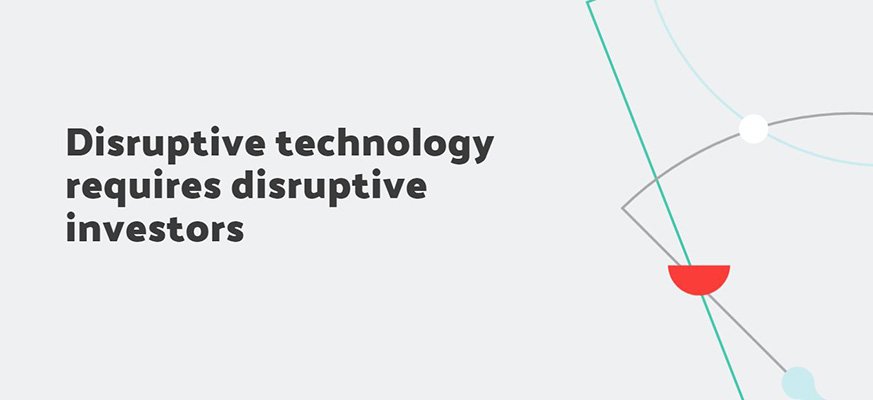
Metaversal And CoinFund: If an NFT project turns into a DAO and then turns into a brand and innovates from a technology perspective, that would be very interesting.
Vanessa, on the flip side from an investment fund, how did you arrive there? Tell us a little more about what you do and how CoinFund operates.
I was in traditional finance for about fifteen years and I came across Bitcoin pretty early. I paid attention but not too much. It’s not enough to make it my full-time job because I was investing a little bit. I was fundraising for a project. I came across ConsenSys and met with Joseph Lubin. When I understood the Ethereum project and the implications of it, I immediately jumped ship and worked at ConsenSys for five years. That was in 2016.
During my time at ConsenSys, I was pretty early in NFTs. Jake is the Founder of CoinFund. Jake and I bonded at that time when no one cared about NFTs. Moving from that, we had a discussion and decided to work together at CoinFund. I joined in May 2021 and I’m the Head of Portfolio Growth. I help our company scale and grow.
CoinFund is a multi-strategy asset manager. We invest in early-stage companies. We have a hedge fund. We create entities like Metaversal. We will explain how Yossi and I work together on that that focuses on specific sectors. We want to offer a wide array of strategies to our investors. We have been growing the firm since then.
We get the question all the time, “What NFT project should I invest in? What NFT should we buy?” If we get it all the time, I can only imagine how often you all get that question but we are going to ask you anyway. Let’s start with the broader picture in such a dynamic space, which feels like it’s changing by the day or if not the day, the second. What moves the needle for you? Let’s start with the broader projects, and then we can hone in on specific NFTs.
We look at the broader NFT market. We refer to iconic NFT assets, “What are the NFTs that are going to stand the test of time that have cultural relevance, that has a community, that is showing signs that this isn’t a flash in the pan. This is something where it’s going to be around in 3, 5, or 10 years’ time.” It’s the same way you would think about a venture investment into a startup. You are looking at the longevity of the team, the people behind it, and the product that they are producing.
Where does that stand in the market? Is it something that is unique? Is it differentiated? Is it pushing the boundaries? Is it something that already has the ingredients that, if successful, will last ten years? That’s the overarching lens that we look at any NFT that we are going to acquire. We have our own metrics and we have what we call the NFT Value Stack. It’s got different components to it and metrics that we can go into at what makes up that stack for us to determine that. In essence, we are investing in cultural moments that we believe by time are going to become more relevant and valuable to a segment of a population.
To answer your question on, “Which NFT should you be buying?” one, is it something that resonates with you as a culturally significant asset that you want to acquire and hold or that you think someone else is going to feel extremely valuable that they want to now be part of this? It’s either because of the status that it brings, the membership or community that it gives you access to, or the financial economy that’s being built around it in some kind of play-to-earn game mechanic or something that you can leverage on DeFi.
What do you think is coming in the next 3, 5 or 10 years down the road? Universally, everyone is like, “I don’t even know what is coming next a year from now, much less 3, 5 or 10 years.” To take that long-term perspective, though, and to invest in projects and support projects that are thinking that far ahead in a space that evolves quickly month by month, quarter by quarter, and certainly by the year is pretty powerful. I don’t know that a lot of folks even have the core competency to take that perspective or go that deep in the space in the weeds of what companies are working on. That’s pretty cool and impressive.
Where do generative art projects like these 10,000 collections or 8888 or 777 fit into that? My sense is some of them could fit the criteria and other ones clearly don’t. How do you differentiate between projects that have that type of staying power and the ones that don’t when you have very little data to run with? Sometimes these projects come out and 2 or 3 weeks later, it’s like, “Do I Mint or do I not Mint?”
We have seen something like Bored Ape Yacht Club. It has only been around for 9 or 10 months and securing partnerships with global brand powerhouses and is now valued anywhere between $2 billion to $3 billion. Nike announced that they are acquiring RTFKT that started in 2020. You’ve got early young projects that are entering the scene, gaining notoriety quickly. How do you differentiate between a flash in the pan and something that has longevity? There are a couple of areas to look at that can give you some indication of that. It’s very early, so it’s hard to say for sure.
The things that give you that type of indication are primarily around the community that is being built around these assets, particularly within the PFP and generative space because we were not talking about a cultural iconic moment years ago, or a winning NBA shot for a specific game or anything like that. We are talking about the avatars of the metaverse. Which ones are going to be the culturally relevant ones that when you are walking around in these metaverse worlds, people are going to be like, “That person has got some OG street cred because they are flexing this avatar?” That’s the equivalent that you are doing.
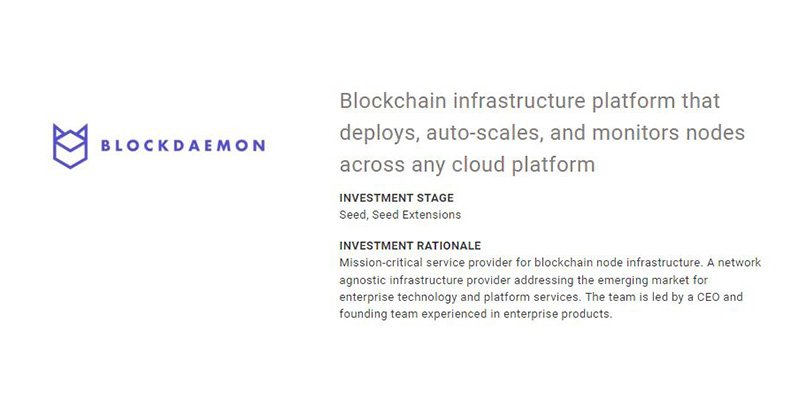
Metaversal And CoinFund: What we see is that conversion is coming where the accessibility of NFTs will increase. There will be more and more interoperability, whether it’s on the protocol layer or at the application layer, and that will continue over the next three to five years.
The way that happens is by other people who are collecting it and involved in that community, how strong those people are, and how vocal they are. It goes to the crux of some of what we are seeing now, which are new ways and new IP Laws or new ways of sharing IP that encourage that activity. We are seeing in the Bored Ape Yacht Club world as an example. They gave full commercial rights to anyone who is a holder of a Bored Ape.
What that did is propelled that project in a way much quicker than any other project before it because now, people were incentivized as owners to be part of this community and pour more additional effort into its success. “Now, I’m an Owner of this Ape. I’m able to build a comic book out of it. I’m able to do a commercial deal. I’m able to go to Universal Music and start a band with four of my Apes.” This is something that was unimaginable before, whereas other projects or brands hold their IP very closely and they have to decide.
That’s what we are seeing is propelling these types of communities and giving these types of incentives for everyone to double-down on it. We look for those types of projects where it has those mechanics built into it that allow that top of incentive structure. It’s very Web 3.0 and crypto native. It’s all about incentive organization. The NFTs enable that type of mechanic in new ways that were previously not possible.
What are your thoughts here on the NFT-specific projects and then the broader perspective?
CoinFund doesn’t invest directly in NFTs. We invest in founders who are building NFT solutions. We have been doing this for a while. We are pretty excited about giving other founders the opportunities to build on these solutions. We invested very early in wearable and Dapper to build NFT protocols in marketplaces. We have invested in Upshot, which looks at the financialization of NFTs. We have announced our investment in Holaplex, which is building individual stores for indie creators on Solano. We also invested in another company that focuses on the financialization of NFTs.
The solutions that cut across protocols and use cases are appealing to us. We believe in the future of NFTs. Now, we think the mental frame sometimes is NFTs are collectibles and art but NFTs are so much more than that. We are investing in all the infrastructure that will allow people to interact and transact with NFTs in the future, whether they be collectibles, financial instruments or real-world assets, everything can be represented by an NFT and transacted as an NFT in the metaverse or elsewhere. Creating that infrastructure is something that’s exciting to us.
One of the interesting things that you mentioned, Yossi, was the Bored Ape Yacht Club and all the things that it’s doing with regard to IP and how that’s opening up all these different channels. You had mentioned separately that you think it could become a powerhouse brand like a Nike of the world or something like that. I’m curious from both of your perspectives. Let’s start with Yossi because this was the genesis of the statement that you made. How does an NFT project become a powerhouse like that? Vanessa, does that on your side change, how you view investing in an NFT project versus a potentially world-changing, needle-moving brand?
What we are seeing with something like Bored Ape Yacht Club and these powerhouse projects that are emerging is rarely to be premium or the statements that you get when you become an owner versus a consumer. When you are buying a pair of Nike, you are buying into the vision of Nike and what they are selling to you in terms of the brand that you are buying into. Effectively, you are a consumer. You are on the one side of that transaction.
What you are seeing with Bored Apes and other projects in the space now when you become an owner is that your mental model of that community completely shifts. You are no longer just on one side of the transaction. You are on both sides of the transaction. You are both in it for the long haul and the potential financial gain that this can create. You are also a shareholder and voting member of what happens in this community and a vocal advocate of how it should be shaped.
If you are starting with a community of 10,000 Apes as an example and it starts with 2,000 or 3,000 people who have got a vested interest in the say of how this grows, all of a sudden, you have 2,000 to 3,000 raving fans on a very early brand as opposed to just raving consumers of a brand. If you put that into play, all those people, “What are they doing every single day to enhance the value of this?” You get these network effects in a small upstart brand. That gives you the ability to reach far beyond what another upstart would be doing that you can bring in all these culturally relevant moments into your brand.
You can get celebrities to now change their profile picture to an Ape. You can get musicians to be putting it up at their concerts. You can become a culturally relevant icon without having to spend like Nike does billions of dollars to buy that status. It’s coming with the status because everyone is coming onboard with it. That’s the phenomenon that we are seeing with something like Bored Ape Yacht Club.
Over time, if it continues on this trajectory, it will be more valuable than a brand like Nike without having to spend a fraction of the ad spend that Nike has to do to get those endorsements. You are seeing celebrities coming to Bored Ape Yacht Club as opposed to Bored Ape Yacht Club going into celebrities to sign them with celebrity deals. It has completely inversed the model.
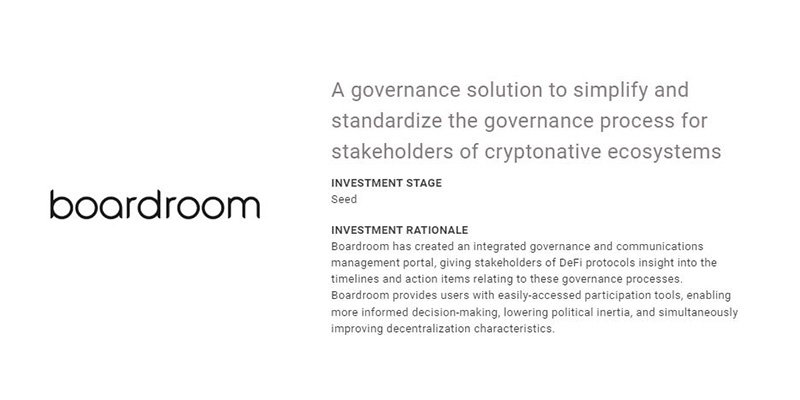
Metaversal And CoinFund: For the first time, you have the ability to have true digital ownership, and the ability for that to be traded globally, instantly, as long as it meets the standards of an NFT and that standard is open and prolific.
It’s interesting because it evolves and morphs over time as that community evolves and different owners come in and out. We will talk about one of the hot topics here that somebody slipped through. Vanessa, how does that impact your perspective on investing in NFTs versus a community of NFT holders versus a brand like Bored Ape Yacht Club that’s becoming this powerhouse?
We invest in technology and technology innovation. For us, we see that with that lens. If an NFT project turns into a DAO, and then turns into a brand and innovates from a technology perspective, that would be very interesting for us. If it’s morphing into a consumer brand, I don’t think that’s in our mandates at this stage. There is so much to unpack here. NFTs are the new social media, brands, and loyalty points. It can be managed as a DAO. It can be a community that’s organized through a DAO.
We are looking a lot at DAOs and the power of the community that they create and what can come out of it. Yossi can speak to the ConstitutionDAO investment that they made and see how it is interesting and experimental at this stage to see what the outcome is. In our mandate as a fund, we are focusing on the technology built and less so on the commercial outcome that could be part of it. For example, we are not investing in specific games because we don’t know what the commercial outcome of that specific game will be. We will invest in gaming infrastructure and NFT infrastructure that allow for using NFTs in gaming, for example.
We talked a little bit about co-ownership and versions of ownership. There’s this very nebulous thing that’s going on now around IP like, “Who owns the trademark? Who owns the IP of a particular thing? Is it divided up in some interesting way?” I’m curious maybe we can kick it back to you, Yossi, on your thoughts about how IP plays a role in all of this. How much do those community members need to own versus feeling a part of it? How does that play out? I don’t think we have seen all the repercussions that are going to play out here in terms of how maybe there are some landmark legal cases coming up here around how does this IP ownership gets implemented.
In owning the metaverse or being a successful NFT brand in it, the more you lean towards an open ecosystem, the higher your chances of success in this ecosystem. A typical Web 1.0 or Web 2.0 approach is closed and centralized. It’s very, “I’m the gatekeeper. I make all the decisions. You have to come to me for permission.” What we see here in the Web 3.0 world and the crypto world is that everything is opened up. The more you open it up, the faster the network effects and the more people become raving consumers, fans, co-owners, and believers and start contributing to these projects. It’s very much an open-source approach.
Where we look is, “Where are those IP licenses being applied.” In fact, the first investment we made in an NFT was a project called Nouns. If you know Nouns DAO, we acquired Noun9. One of the reasons for that was it was the first project that rarely put its weight behind a Creative Commons license, CC0. What CC0 means is rarely that no one owns the rights to this license. Anyone can do anything, which is a radical idea for a new brand.
Anyone can do anything with us. You don’t need permission to copy it. You can create generative works, make derivative works, take our logo, put it on a T-shirt or sell it as merchandise. We have no claim to any of that and that’s how it was released. This idea that the more open you make it, the faster it will spread, it’s exactly in line with that philosophy. That’s why we participated in Noun9.
One of the prominent creators there is Punk 4156. He was a big CryptoPunks holder. He went to Larva Labs and said, “You guys are doing it wrong. You are holding all this IP. You were iconic. You were the first or one of the first but you are not doing anything with that. You give us the community the ability to take this and run with it.” Unfortunately, he hasn’t heard a response yet from Larva Labs, but then what he did was he sold 35 of his Punks on the market.
He underpriced them. He brought the price of Punks down and eventually sold his Ape Punk for about $10 million. There’s still great demand in the Punk community but what we have seen is the price of CryptoPunks go down from about 150 ETH in its all-time high down to about 66 ETH while things like Bored Ape Yacht Club is continuing to climb. The Nouns treasury is sitting on $75 million in continuous sales of record-breaking numbers. The market is responding in a way, saying, “We also believe that open ownership is a better model in this Web 3.0 world.”
This conversation came up while we were in Miami with someone who owns some IP around the Meta brand. He was making this comment around what Facebook has done with Meta is they didn’t even bother getting that mark from anybody. They just said, “We are going to start using it and we are going to own it.” It’s the strategy of, “If you want to sue us, you can.” He was almost giggling around it. It’s like, “This is all against the spirit of the metaverse, Web 3.0, and all this stuff. It’s funny to take that approach to call your company Meta and go the opposite direction of sharing and integrating.”
That’s pretty aligned with Facebook in their DNA. I wouldn’t have expected anything otherwise.
I appreciate you echoing the direction of Web 3.0.
Let me ask from Vanessa’s perspective here because we are talking about investing in technology and the underlying tech that drives a thing. That’s fundamentally intellectual property that drives value in a lot of ways for a lot of companies in these investments. From a fun perspective, we see the value in the community side of openness as a model. How does that drive value from a fun perspective?
We are investing in open-source technology. Open-source technology, although it has some licenses and we have seen it with Uniswap changing the license so that people legally would be liable if they hacked the protocol, most of the protocols don’t have those restrictions. It’s unlikely that we are going to go that route because the pace of innovation in blockchain is something unseen before. There’s no need to protect something that everyone can fork or use and build products on.
We are very comfortable with that. With all my interaction with all the founders, this is not a discussion unless they have some closed-source projects. We usually are not involved in them. That was the same thing when I was at ConsenSys. There was no protection of our IP because it’s such an open community and the value is in the community and the adoption of ConsenSys, whether it’s NFTs, protocols or projects, it’s the same approach.
Crypto VCs are very comfortable investing in open networks and protocols because that’s how they are built and designed. It’s nothing new for someone like CoinFund. It takes a lot more for the traditional folks to get their head around. It’s one of the boundaries here that makes this defensible over time. Trying to figure that out in a traditional lens is almost impossible. It’s a completely new way to think about how this technology is built, how people participate in it, and where the value is.
We had a chance to travel quite a bit. I’ve got back to LA after 40 days on the road. The conversations around Web 3.0 were so plentiful. There are a lot of interesting panels that we moderated or conversations we had around DeFi, virtual land, gaming, NFTs, and all of this converging. I wanted to clarify. Do you agree that all of this is now coming together?
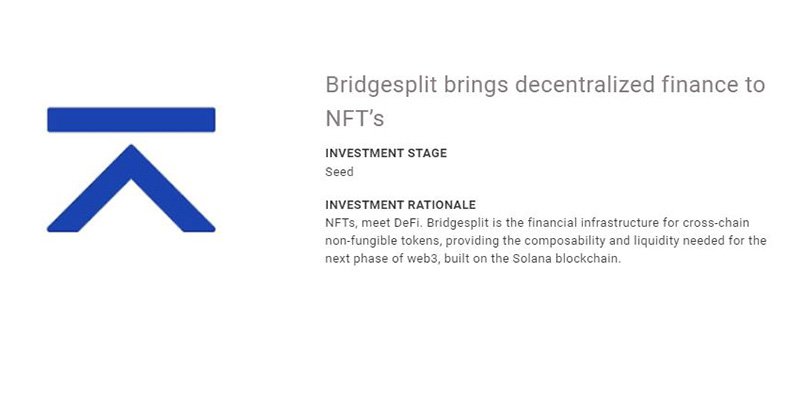
Metaversal And CoinFund: What we’re seeing here in a Web 3.0 world is that everything is opened up and the more you open it up, the faster the network effects, the more people become raving consumers and fans and co-owners and believers, and start contributing to these projects.
To Jeff’s point earlier, when you look at what is possible in 2022, it’s a little bit unpredictable because of all this technology. If it was individuals in a room and you said, “Go create for a year,” you don’t know what is going to come out on the other side. Is that your perspective as well that we are seeing this massive convergence in all these different areas?
We are seeing the convergence of Web 2.0 and Web 3.0. That’s the first step. There is a clash of cultures there. The NFTs allowed us to bridge that gap very easily. For the large consumers to understand the power of the technology they are using and how much ownership they have, having projects that give them the opportunity to use this ownership across platforms, marketplaces and games are yet to come. It’s not the reality now.
What we see is that conversion is coming where the accessibility of NFTs will increase. There will be more interoperability, whether it’s on the protocol layer or at the application layer. That will continue over the next 3 to 5 years. That will allow seamless experience from a consumer and an owner perspective of the NFTs or the people in the metaverse. That’s going to transpire in our everyday life. We are looking at art collectibles and the financialization of NFTs but we are going to see workplaces, credit credentials, loyalty points, and eCommerce in the metaverse.
We invested in a company called Space, which is going to be at the confluence of Web 2.0 and Web 3.0. With that eCommerce component, that can go viral in several different ways as the information spreads and people have access. There are seven billion people or more on the planet. Maybe 99% do not travel and can have access to some online experience. The sky is the limit here of what is going to be happening in the next years.
What do you say to the folks that are critical of the potential of a metaverse proliferation, where they are like, “How many different metaverses can you have? How can all of this be done in the metaverse? Doesn’t there have to be one or several winners here?”
I find it exciting and I hope that we are not going to be replicating the Web 2.0 mega-tech companies because the diversity of the metaverses is going to reflect the diversity of the world and the capacity for us to engage in different ways, even with different personas and have unlimited access. We will see the metaverses coming together in the future, building bridges between themselves and having increased access. We have to embrace diversity because it makes us richer. It makes innovation flourish. Having 1 or 2 metaverses is not the world that I want to see in the future.
We look at what is going to drive this multiverse of metaverses. Why we talk about NFTs unlocking the metaverse is because, for the first time, you have this ability to have true digital ownership, scarce digital ownership, and the ability for that to be traded globally instantly as long as it meets the standards of an NFT. That standard is open and prolific. Why is that important? Now that you have asset ownership, people want to be able to move their assets from one place to another.
We're seeing the convergence of Web 2.0 and Web 3.0. Click To Tweet
I have the awesome avatar that I spent 100 hours playing in a certain game developing. If all I can do is only keep it within that game, then it’s much less valuable to me than if I could take it to the next game that I’m playing and the next experience that I’m going into or into that office meeting that I’m going to dial into with my VR headset over time. That’s going to force companies, protocols, and projects around the world to embrace the standard because ownership unlocks all of that.
We see the ability for ownership of property in the US versus other economies. The ability to bring that about sooner made America develop a lot quicker than other economies around the world. The same will play out in this metaverse play and NFTs rarely are the centerpiece of that. It’s why we have Metaversal so focused on investing in the NFTs as opposed to the pick-and-shovel businesses as much as we do on the NFT side because we rarely see that as the integral layer that unlocks the metaverse.
We look forward to that day when you log into your business meeting and you are the Bored Ape and the other person is the CryptoPunk.
It’s happening already. We saw Adidas sponsor GMoney and GMoney is his ape avatar. That’s what it means to be sponsoring GMoney and a big brand put their weight behind that.
We have got Neil Strauss writing for Jenkins the Valet but it’s crowdsourced. These things are happening all the time.
Even in IRL, we are walking around as their own avatars with dyed hair, different outfits, and all kinds of fun stuff to reflect their apes.
Shout out to Cheetah Cowboy, who was representing with cheetah spots in his hair and everything in Miami.
With augmented reality, that will become more and more commonplace. Digital fashion is becoming a category in an industry that is growing. Someone will be wearing a pair of Nikes and you put your AR glasses on and all of a sudden, that puts you into a completely different outfit. That’s what is starting to happen. As we digitize more and more, there’s going to be more of that happening every day. It’s not far away from where apes walking into the boardroom is going to be a common occurrence.
The real question here is, as you look outside of your own companies and portfolios, what other art projects or companies are you excited about? Who are you looking to for inspiration and education?
It’s the early artists who are coming into the space in droves that are undiscovered, unknown, and are pushing the boundaries of what this technology can do and experimenting. That’s where the most interesting stuff is happening. We spoke at the beginning of the show about a new platform, FXHash, where new generative artists are experimenting on a different blockchain on Tezos, a much lower-cost blockchain, and creating some unique and interesting generative art.
That’s where something like NFTs rarely is powerful. It opens up the playing field for anyone to participate. Everyone is welcome. We see innovation in the strangest corners because of that. Where do we look for inspiration? It’s in those corners. From there, we learn, and then we bring that into our studio and start looking at how we can take that inspiration and use that as part of our productions.
Vanessa, how about you?
For us, it’s being very close to the community, whether it’s the DAO, creators or developers community. They are the ones who are creating this industry. We pride ourselves as crypto-native VCs. We are founder-first. They are the ones who give us ideas. We try to help them once they are on their journey. We know what is going on in the market and we give them perspectives. Those are the inspirational folks for us.
We want to take a step back from all of that and get your personal perspective on some questions. It’s a section that we call Edge Quick Hitters. They are a fun, quick gateway to get to know you a little bit better. It’s ten questions overall. We are looking for short single-word or few-word answers but we can always expand if we get the urge. Vanessa, let’s start with you. What is the first thing you remember ever purchasing in your life?
It would be a book probably or something like going back to school.
Early influential books for you?
The one that threw me off the most was Brave New World by Aldous Huxley. I would spend my summers in my grandfather’s library, where there are all these books lined and read them randomly. This one I read at a very young age. I was completely blown off by alpha and beta like, “What is going on? What is this world?” It scared me. I was like, “I don’t want to live in this world.” I have always had that in the back of my mind as, “What happens when you commoditize people and ideas? What can we do about this?”
How can we make technology work for the good of humanity? It sounds like that has been your mission in life ever since.
They say that that’s one of the best things you can do for your kids is have a big bookshelf full of books. It’s a predictor of success or something.
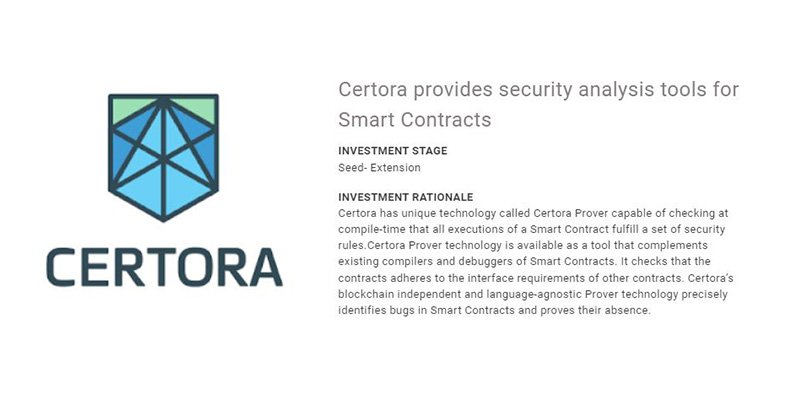
Metaversal And CoinFund: The sky’s the limit here of what’s going to be happening in the next five years.
Yossi, let’s go to you. What is the first thing you remember ever purchasing in your life?
I’m sure it’s not the first thing I ever purchased but for some reason, it stands out in my memory. It was the first time I had bought a computer game called Golden Axe. I must have been 11 or 12 years old. I remember the excitement of going to the mall to buy the game, go home, put it on, play it and spend hundreds of hours dueling out in the Golden Axe world.
Question number two, Vanessa, what is the first thing you remember ever selling in your life?
In my first job, I was working at an investment bank and we were doing roadshows. I’m selling companies to hedge funds and having them invest in there. That’s the first real transactional experience I have had. As a child or before, that was never my thing.
Yossi, how about you?
I remember selling T-shirts on the beach in a place called Plettenberg Bay in South Africa. I’m originally from South Africa. It’s how I bought the Golden Axe game was selling these T-shirts. In Plettenberg Bay, the license plate is CX and I didn’t understand it at that time. I was probably 10 or 11 years old. The T-shirt said, “I have CX appeal.” I was walking around the beach selling these T-shirts. I sold photos that were cute and hilarious. I had no idea but the T-shirts sold well, so I was excited.
I love and hate this thing about kids. They have no idea why their sales work. They get into this delusion that they are incredible salespeople. Some of them are but some of them are damn cute and maybe terrible salespeople but they end up selling a lot.
I completely blanked. You can keep that that I was doing summer jobs and selling clothes. I worked at Pizza Hut and all those things but it wasn’t like me selling. It was more an enterprise side.
Question number three, Vanessa, what is the most recent thing you purchased?
I bought some makeup.
Yossi, how about you?
It was a CloneX WIN file from RTFKT.
Question number four, what is the most recent thing you sold, Vanessa?
During the pandemic, I sold a lot of stuff that was in my closet and my house that I didn’t need. I had a lot of time on my hands and all that stuff like, “Do you really need it?” I don’t know so I sold everything. In terms of cryptocurrencies or NFTs, I’m a holder. It’s difficult to give examples there.
Yossi, how about you?
Not to go against the holding trend but the last thing I sold was a Bored Ape.
Question number five, Vanessa, what is your most prized possession?
It’s my health, to be honest. It’s something that I cherish and look after because we only have one life. We can buy all these Bored Apes all day long but if we are not there to be healthy and share with our friends and family, we don’t have a lot.
Yossi, how about you?
I’m a new father. My most prized possession is my daughter. Her name is Maya. She keeps me up at night but puts a smile on my face all the time.
Question number six, Vanessa, if you could buy anything in the world, digital, physical, service, and experience that’s currently for sale, what would that be?
For me, it would be an experience. I would do a year around the world tour or something like that.
Yossi, how about you?
I’m the same. The opportunity to travel with my family for a year or two around the world and immerse ourselves in other cultures would be what I would spend my money on.
Question number seven, if you could pass on one of your personality traits to the next generation, what would that be?
I would say intellectual curiosity for sure. It’s something that I have had since I was young. I’m always not thinking out of the box but being curious and wanting to know more about things you don’t know. That’s what brought me into tech and the exciting space we are in. I’m want to learn more always.
Yossi, how about you?
For me, it would be I keep cool, calm, and collected under pressure. It takes quite a lot to ruffle me. That would be the personality trait that I would pass on.
Vanessa, if you could eliminate one of your personality traits from the next generation, what would that be?
It’s impatience. I’m always impatient and sometimes, I can be less generous with other people who are more patient than me.
Yossi, how about you?
I don’t experience Vanessa as impatient. I find her having a lot of time for us and all of the things that we need. I take that for what it’s worth. On my side, the thing I would give up is the same quality. People say that my cool and calm demeanor sometimes comes across as not being excited or passionate about something. Keeping this even kills and sometimes rubs the highs of sharing in people’s joy.
Question number nine, Vanessa, what did you do before joining us on the show?
I have been on call nonstop with founders, projects, and my colleagues. It has been a great day.
Yossi, how about you?
I’m on my first day of paternity leave. I rushed to try and get my daughter to sleep and not make any noise so we could record this show.
Question number ten, Vanessa, what are you going to do next after the show?
I’m going to a woman’s in a crypto drink. I’m pretty excited. I went brewing in crypto breakfast. Some of us at breakfast were like, “Let’s grab drinks.” It was because other people were in town, especially with all the holiday parties and stuff. I’m going to go there and probably meet new faces and see what people are up to.
Yossi, how about you?
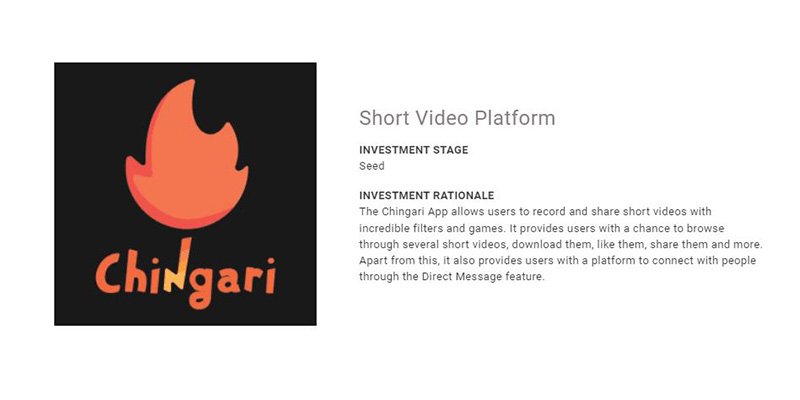
Metaversal And CoinFund: Now that you have asset ownership, people want to be able to move their asset from one place to another.
I’m going to pack for an upcoming trip to South Africa to visit friends and family.
That’s Quick Hitters. I appreciate you all playing along with us here for those fun questions. What do you say we jump into some hot topics?
The Owner of the Bored Ape number 3,547 made a fat-finger typing error when listing the item for sale online. It was instantly snapped up by an automated account and put back on sale for nearly $250,000. The seller, maxnaut, told CNET he had meant to list Bored Ape number 3,547 for sale at 75 Ethereum, the cryptocurrency used for many NFT trades. During one of the many trades he lists online every day, it had caused him to instead type in 0.75 ETH.
There are a lot of different ways to look at this story. The Twitter comments on this are quite entertaining. One should realize that on the other side, he did own at least another Bored Ape and some other valuable NFTs. It doesn’t take away from the gut punch that probably he wakes up at 2:00 every morning and will for quite a long time but at least he wasn’t completely in the cold. This wasn’t his one and only Bored Ape.
I don’t know how much this is specific to blockchain or not but you can’t reverse them. I don’t know how common this is when you see, “Bitcoin hit some low trading amount in the overnight trading or something.” There are a lot of scenarios in blockchain because you can’t reverse these things. You can’t go back and undo a lot of stuff where this happens. It’s a question then of how the news spreads, whether that’s what people consider the value of a thing or if it was a mistake.
Also, interesting too, a Bored Ape has this price point here of around $200,000 or $300,000. Josh, you made the point that some of these folks without Bored Apes are holding lots of other valuable NFTs and things like that. By the same token, maybe I have a little bit of concern for the people who do have a Bored Ape. They are starting to act like they are living high on the hog and maybe that’s one of their only sole assets. $300,000 is a significant amount but once you start spending and acting like you are rich without having that money in the bank, things can go south pretty quick.
Unfortunately, these things scare people from entering the space and they hear stories like this. What we need is this continued growth of folks that are not into crypto. NFTs are one of those great gateways. It’s bringing so many people in. We are blessed with the way that Top Shot hit the mainstream and the ease with, which people can come in, drop their credit card, purchase stuff, and not even knowing necessarily that they are doing something in crypto.
Fundamentally, projects do have to do a better job of making these mistakes more infrequent. It’s not this big at $300,000 but this does happen a lot. As an entrepreneur, I see that as a problem. That’s a signal that there’s something not right in that system that needs to be improved because, as you highlighted, Eathan, “Once you pull the trigger, it’s done.” There is no going back. You can’t call customer service and reverse something.
You could technically discuss the responsibility of the platforms, depending on where you sell and buy. You could imagine a world where some consumer protection rules require a 5-minute or 10-minute grace period where you can reverse the transaction. It’s something that is feasible from a technical perspective that it’s not available.
OpenSea sometimes gives you this light orange prompt that tells you that you are selling it below the floor. Is it better than nothing? Yes. Is it easy to miss that or not understand what you are doing? If you are not an avid trader, it would be quite simple to overlook that or misunderstand it.
There have been a couple of situations where that’s happened and the seller has made a plea to the community. The community has rallied around it and the buyer sometimes reversed the transaction. It could be interesting if the community rallies around this one. We will see if the new buyer has got cold blood and doesn’t care, and see if they are a person behind that keyboard and says, “I will reverse this transaction.”
In a world of crypto where a huge amount of the value is making snap decisions, it could mean a world of profit. It could be pretty hard for that buyer to give up on that. It is community-oriented. There could be blackballing among the community of saying, “You are not part of the community. You acquired this surreptitiously.”
Let’s cover the next one, Eathan. What do we get cooking?
We are talking about gaming here. Ubisoft has an NFT that requires you to play 600-plus hours of Ghost Recon. The Wolf Enhanced Helmet is a new NFT item for Ghost Recon Breakpoint that Ubisoft launched as part of the company’s ongoing experiment with the blockchain. The publisher isn’t selling these digital items but instead giving them away for free to qualifying players.
In this case, to get this Digit, Ubisoft’s term for these NFT in-game items, you need to have played over 600 hours of mediocre open-world shooter Ghost Recon Breakpoint. This begs the question that we are all exploited now in this whole world of blockchain, crypto and NFTs. What is the value of things? If you asked me, “Is that a free item?” It’s not free. You’ve got to pay to play the game.
I liked the idea of in-game assets that can’t just be purchased straight up that have to be earned through the gaming economy. This feels a little bit extreme. For me, it points to the Brave New World concern of using technology in a way that can be detrimental. We have heard stories of what happens when people overplay games. They don’t get enough sleep, forget to drink water and eat. It creates anti-social behavior. I’m going to go thumbs down on this particular NFT and how it’s set up personally.
The guy’s name is EllioTrades. We have a friend that’s got deep into one of their NFT projects. It was a free or relatively inexpensive NFT that you’ve got. You had to solve a bunch of riddles and go through this fantastical pre-launch scenario to get it. My sense of the outcome of that particular project from hearing from people who were involved, where they thought it was fun.
If you make the game that you have to play fun, engaging, interesting, mysterious, and entertaining, give away a free NFT at the end of it. If it turns into the equivalent of what we have had for many years now, which is like, “Watch ads for a couple of pennies on the minute for three hours and we will give you some money,” then that’s a huge headache.
The kids are going to be spending 600 hours playing the game and this isn’t a justification for yourself. I would rather have the choice of being rewarded something for the time that I’m putting into a game if I’m playing it than not have the choice. If I had to choose between the two worlds, would I want one, where I am rewarded for my gameplay versus one that I’m not? Yes, I would go with rewarded. Is there a moral responsibility for the game company to do that in a balanced way that doesn’t create too many perverse incentives? Yes. What does that look like? How do you get that right when the shareholders want to see more eyeballs playing your game 24/7?
It’s tricky about gamification that enables human agency and gamification that causes people to do behaviors that are more extreme than what they were considering doing prior. How do you strike that balance? One comment in the article wrote, “The Federal minimum wage is $7.25 an hour and 600 hours adds up to $4,350.” It does become quite an expensive helmet, especially if you are going to play half as much as you ended up playing to earn this helmet.
What if that helmet then sells for $43,000? Is the person who wrote the article now a big fan because the person offered $700 an hour?
Vanessa, what are your thoughts?
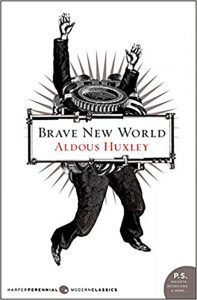
Brave New World
I’m not philosophically opposed to that mechanism. I would want to make sure that people when they choose to do that, there’s a possibility that there’s a market for these assets and a way to monetize them or have the people believe that there’s actual value in what they are getting. That’s not clear to me because I don’t know the game as much as that specific game and I don’t know what this helmet allows you to do. If that helmet is an extraordinary asset that you can get and only a limited number of people can get the asset, and over time that allows you to win more or do more things, why not?
It’s like anything. We are testing the limits. You have to get in there and iterate, as lean startup folks appreciate that. This is one test and I’m sure even for the company, this is a test to understand what those dynamics are. It’s all learning. We are going to have an opportunity to take that information, do better and be better. Cool things will come from it. I’m pretty confident in that.
Talking about testing the limits, you brought up Brave New World, Vanessa, a lot earlier. We are seeing these dynamics and a lot of varied principles are coming at stake here. I’m thinking about dignity. That’s all up to the person that’s playing that game. If they are enjoying it, great. If they are doing it just to get that and they have got sucked into a wormhole around that, it’s not fun.
It makes me think of Starbucks points. If you love drinking coffee and you can go back to Starbucks anyway, great. Use the Starbucks points and play the Starbucks game. If it turns into something that’s a user of the consumer and the individual, then that’s not fun anymore. That’s all to the individual. If you like coffee, Starbucks points are great. If you don’t, they are not.
What I think is maybe the big equalizer here and I might be completely wrong, is that the market decides the value of these. If gamers think this is Ubisoft trying to manipulate them, then it’s going to trade for cents on the dollar. If there is real clout and value for the item that’s being created, it’s going to trade for tens of thousands of dollars.
All of a sudden, the conversation becomes mute because of the price tag that it’s trading for on the market. The ability for the market to decide what is valuable is interesting, whether there’s a response from the community saying, “You are trying to manipulate us and we are not even going to go for this,” and that gameplay plays out, it’s interesting to see how that works.
I appreciate the varying perspectives on it. Time will tell across this and so many of the other things that we talked about. Vanessa, we appreciate your time with us and digging into the weeds of all fun things in NFT and metaverse, and all these hot topics and Quick Hitters. We want our readers to have a chance to follow you in all the fun things that you are working on. Where can they go to do that? Yossi, let’s start with you.
I’m on Twitter, @YossiHasson or you can follow Metaversal at @HelloMetaversal. Go to our website, Metaversal.gg, and contact us from there.
Vanessa, how about you?
I’m on Twitter, @VanessaGrellet_. On our website, you will have all the contact details. If anyone is looking for a job or wants to enter Web 3.0, contact me directly. We have over 100 companies that are looking to hire talented people. If you have a project that you want funding for, also contact us and we will make sure we will look at it.
We are going to do a little giveaway for our readers. Yossi, do you want to fill us in on what you’ve got over there?
We have some rare FXHash Mints and some generative art that we will be giving away. I don’t know Jeff how you decide on who wins but I will leave that in your hand. We will let you know which generative art piece from FXHash. It’s a new platform on the Tezos chain that we spoke about and some creative, interesting new artists are emerging from there. We think that if you have been following things like Squiggles or Chromies, that this is the new platform where the iconic generative pieces will be coming from. We are going to give away some of the only ones.

Metaversal And CoinFund: You could technically discuss the responsibility of the platforms, depending on where you sell and buy. You could imagine a world where some consumer protection rules require a grace period where you can reverse the transaction.
Listen to the show, and then go check out our socials for all of the details on the giveaway. We have reached the outer limit at the Edge of NFT. Thanks for exploring with us. We have got space for more adventures on the starship, so invite your friends and recruit some cool strangers that will make this journey all so much better. How? Go to iTunes, rate us, and say something awesome. Go to EdgeOfNFT.com to dive further down the rabbit hole.
Remember, we always invite you to co-create and build with us at Edge of NFT. We are unlocking a whole new way to connect and collaborate with us through our own NFT drop, Spirit Seed NFTs, in collaboration with one of our favorite humans on the planet, Nicole Buffett. She is an amazing artist and philanthropist whose project Spirit Coin serves as the inspiration for the drop. There are only 100 Spirit Seeds that will ever be Minted. You can grab one for 0.55 ETH at SpiritSeeds.xyz.
We have shared this project with our community first as a thank you for your support. Each seed holder will receive 1 of 10 eight-bit generative Spirit Seed designs from our very own Eathan Janney. It’s only 100 ever. You will offset your carbon for one year. You will receive one transferrable VIP ticket to NFT LA from February 22nd to the 24th, 2022.
You will get one Living Tree with all the co-creation, access, contest, and admission perks that you will love. You will also score a 10% chance of getting a Spirit Coin with a recent floor of 2 to 4 ETH and many drops, merch, and other surprises in the near future. Again, head over to SpiritSeeds.xyz to land one while they are available. Lastly, be sure to tune in next episode for more great NFT content. Thanks again for sharing this time with us.
Important Links:
- Metaversal
- WeThinkCode
- CoinFund
- Blockchain for Social Impact Coalition
- Jake Brukhman
- Bored Ape Yacht Club
- RTFKT
- Dapper
- Upshot
- Holaplex
- Solano
- ConstitutionDAO
- Nouns DAO
- Punk 4156
- Uniswap
- GMoney
- Jenkins the Valet
- Cheetah Cowboy – Twitter
- FXHash
- Tezos
- Brave New World
- Bored Ape Number 3,547 – Article
- OpenSea
- Ubisoft – Article
- EllioTrades – Article
- @YossiHasson – Twitter
- @HelloMetaversal – Twitter
- @VanessaGrellet_– Twitter
- iTunes – Edge of NFT Podcast
- Nicole Buffett
- SpiritSeeds.xyz
- NFT LA
About Yossi Hasson

I live, work and play in the Metaverse.
As an active crypto, NFT and blockchain investor, I write an email newsletter and host a podcast on how these technologies will continue to shape our lives and impact our digital future.
You can subscribe here: https://yossihasson.substack.com/
You can also view my startup investment portfolio here: https://cutt.ly/yossi
About me:
Exited open source cloud business, SYNAQ that I co-founded in 2004
Co-founder and board member of non-profit coding school WeThinkCode_
Launched first Techstars Accelerator program in Africa
Co-founder of crypto investment fund, Onchain Capital
Launched first Techstars Blockchain Accelerator (New York City)
Active angel and crypto investor
Co-founder and CEO of Metaversal: investor and curator of iconic NFT assets and companies building the Metaverse.
About Vanessa Grellet

The CoinFund Portfolio Growth team supports and guides Web3 founders and their teams during their journeys from early-stage to growth-at-scale. Our work encompasses helping them build world-class teams, protocols, applications and network governance, forming alliances within the CoinFund portfolio companies as well as across other blockchain projects and protocols.

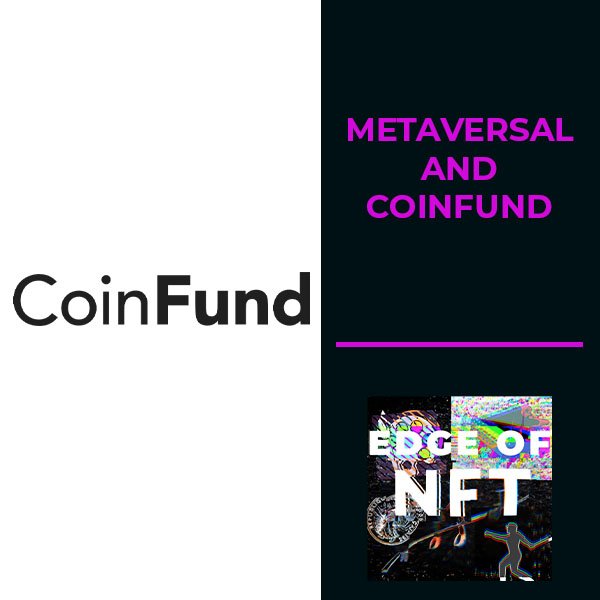
.jpg)

.jpg)
.webp)
.webp)
.webp)


.svg)









